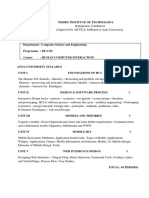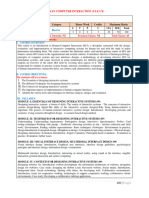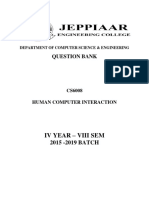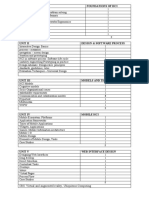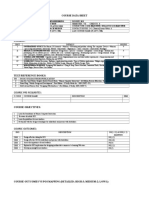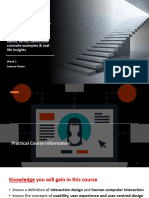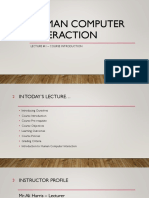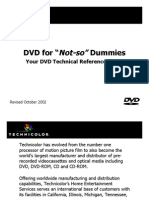0% found this document useful (0 votes)
64 views3 pagesHCI Course Overview
This document outlines the objectives and units of a course on Human Computer Interaction. The course aims to teach the foundations of HCI, design for individuals with disabilities, mobile HCI, and user interface guidelines. It is divided into 5 units that cover topics such as the human and computer aspects of interaction, interactive design processes, HCI models and theories, mobile HCI, and web interface design. Upon completing the course, students should be able to design effective dialogs, interfaces for individuals with disabilities, assess user feedback, and develop meaningful user interfaces. The course will use 3 specified textbooks to cover the various units.
Uploaded by
TOM JOSEPHCopyright
© © All Rights Reserved
We take content rights seriously. If you suspect this is your content, claim it here.
Available Formats
Download as PDF, TXT or read online on Scribd
0% found this document useful (0 votes)
64 views3 pagesHCI Course Overview
This document outlines the objectives and units of a course on Human Computer Interaction. The course aims to teach the foundations of HCI, design for individuals with disabilities, mobile HCI, and user interface guidelines. It is divided into 5 units that cover topics such as the human and computer aspects of interaction, interactive design processes, HCI models and theories, mobile HCI, and web interface design. Upon completing the course, students should be able to design effective dialogs, interfaces for individuals with disabilities, assess user feedback, and develop meaningful user interfaces. The course will use 3 specified textbooks to cover the various units.
Uploaded by
TOM JOSEPHCopyright
© © All Rights Reserved
We take content rights seriously. If you suspect this is your content, claim it here.
Available Formats
Download as PDF, TXT or read online on Scribd
/ 3





